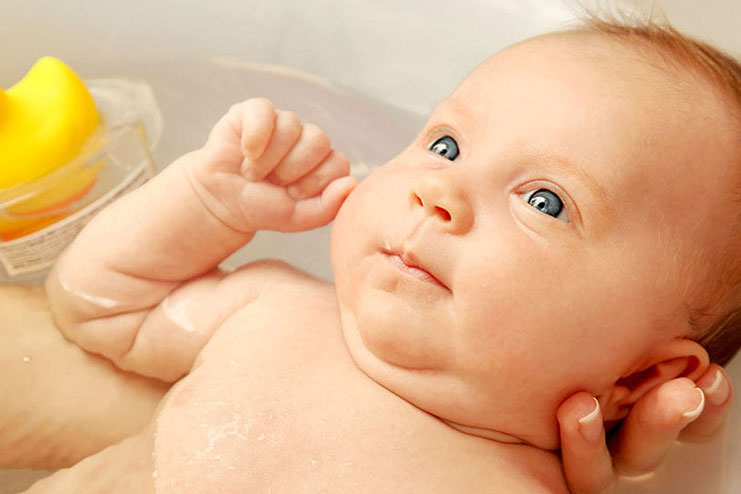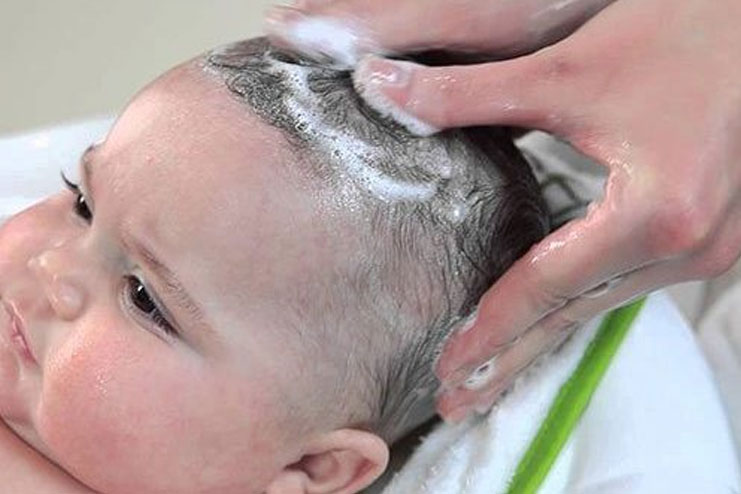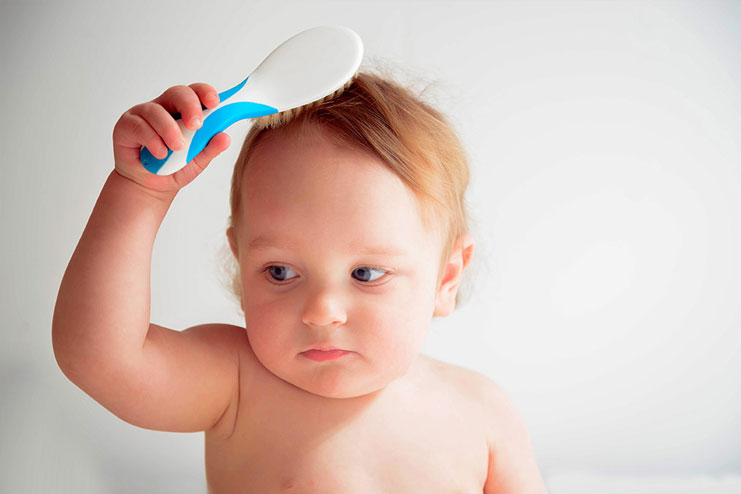For most of the parents, the tasks that are associated with the baby like baths, nail trimming may be confusing and challenging. Some babies support their parents where as some others cry making their parents worry.
Baby care tips and the soothing techniques are same for all the babies but the way how you implement should depend on the baby. This article helps you to ease your efforts and doubts.
How Often Should You Wash Baby’s Hair?
You should not wash your baby’s hair every time you wash your baby. Washing baby hair too frequently may make them loose some of the oils that the scalp needs to remain healthy. Sometimes, it is fine to use the sponge dipped in the water to clean your baby’s hair. if the weather is sticky or if you have travelled around quite around then washing your baby’s hair is a good idea.
Baby Bathing Tips And Routine Hair Care:

Bathing a baby is one of the typical tasks for new parents but can be easy if you follow these tips and your baby get to adjust to them.
1. Treat cradle cap, if necessary:
Some babies are likely to develop the scaly and dry area on their scalp. Mayo Foundation for Medical Education and Research noted that mineral oil is the effective in treating baby’s cradle cap. Take few drops of coconut or olive oil and massage it over the dry area and leave it for about 20 minutes before washing the hair.
Avoid using the baby shampoo during the first week of their life. Don’t get concerned with the cradle cap, if it does not go away in the first month. It can go away on its own within the several months. consult your doctor, if it spreads to other areas to make it worse.
2. Moisturize your baby’s hair regularly:
Take 1 or 2 tablespoons of the mild oil and massage it over your baby’s scalp. You can do it for 2 to 3 times a day, this is especially important if your baby has dry or curly hair.
Use the oils that are especially designed for the babies. You can also use the natural oils like coconut oil, avocado oil, or almond oil.
3. Test the water for your baby:
Baby’s skin is very sensitive to hot water and their bodies can not do well in the hot water. Warm water is ideal for your baby. Before you put water onto your baby, test it with the elbow or finger tips. Water that feels hot for you is hot for your baby as well. If you are using the bath tub, don’t put your baby down while the faucet is still running.
4. Ensure that your baby does not get chilly:
Ensure that the room is warm before you take your baby for the bath. Your baby’s bath tub should not be deeper than the 2 to 3 inches for the safety. Pour some water on your baby’s shoulders at the regular intervals during the bath time to ensure that they should not get cold.
5. You can wash your baby’s hair later:
There is no rule that the hair wah should happen along with the bath. If your baby is not fan of water, you can wah her hair after bath once dressing is done. You can do this by shampooing their hair under the faucet and you should check the temperature of the water running from the faucet before running the bath.
Shield your baby’s eyes with your hand while shampooing and rinsing it out.
6. Keep the hair wash to signal the end of bath
A hatred towards the hair washing is the common hatred thing that most of the babies develop during the bath time. So, save the shampoo for the end to prevent the crying early on.
Be very careful while washing your baby’s hair and scalp at this point as it is very sensitive.
7. Be cautious while choosing the shampoo:
The shampoo that you use for your baby is not only baby specific, but it also should have low pH levels. Shampoos with the high pH levels may make your baby’s hair tangled and it turns the bath time a difficult one.
The shampoo that you use for your baby should have the pH levels between 4.5 and 6. Check the shampoo’s label for the pH levels.
8. Don’t overdo it:
It is not necessary to wash your baby’s hair every day which may lead to dry skin and discomfort. It won’t help them to enjoy the bath time any more. Take baby steps while introducing the concept of shampooing for your baby and keep it short till your baby gets older and starts enjoying it.
9. Hold your baby in a safe position:
Whether you bathe your baby in baby bath, sink, or bath tub, ensure that it is not too deep. Keep in mind that babies are slippery when wet. Hold your baby in the slant positing to ensure that the water should not go into the nose and ears.
10. Give your baby sponge wash during first week:
Until the umbilical cord falls off, give your baby gentle bath with sponge. Ensure to keep the umbilical cord stump dry and pat it dry gently with a cotton ball and clean it with the solution prescribed by your doctor.
11. Never leave your baby unattended:
It is the most important thing to remember about your baby’s bath. Even if you got a call or someone knocking the door, never leave your baby alone in their bath tubs. Babies can easily get submerged even in a few inches of water. If you want to leave the room, wrap your baby in a towel and take them along with you.
12. Detangle your baby’s hair gently:
If your newborn has lot of hair combing is essential to avoid the tangles and knots. Take a comb with the wide tooth or a baby brush and start combing from the ends and then work on the way up towards the roots to avoid pulling of the hair.
All the babies do not need combing at the same time. Wait till your baby gets enough hair to start combing to protect their gentle scalp.
Steps to wash your baby’s hair:

Here are a few steps to follow to wash your baby’s hair safely:
Step 1: get the things that you need. This is the first step to follow before you start bathe for your baby. You need the following things:
• A tub, basin or sink
• Towel
• Baby soap and shampoo
Step 2: fill the tub with the two to three inches of the warm water. Check the water with the finger tips.
Step 3: when you wish to wash your baby’s hair, wash your baby normally and keep the hair wash to the end.
Step 4: once your little one is wet, take some shampoo in your palm and put it over your baby’s scalp and lather into the hair, ensure that it reaches the scalp. If your baby starts to push your hand away offer their favorite toy and sing a song and make their bath time funny.
Step 5: to prevent the water from entering into your baby’s ears, eyes, and nose, slightly lean the arm that is supporting your baby’s back. You can also make use of baby face umbrella that prevents the water slipping into the eyes, ears, nose, and mouth. This is one of the careful tips to wash baby’s hair.
Step 6: wash their scalp in the quite gentle manner as they have the sensitive scalp at this stage. Use a soapy sponge and let it run across your baby’s scalp in sync with your humming.
Step 7: use your hand to rinse out the shampoo carefully. The best way to do it is altering between the water and sweeping the head front to back with your hand.
Step 8: once the shampoo is washed off completely, gently wipe your baby’s hair and let it dry.
Drying baby’s hair:
Drying the baby’s hair will depend on the personal preferences. Some parents want it to dry on its own, but it may put your baby at the risk of cold.
Wrapping baby’s head is the perfect way to protect your baby from getting the chills. Here are a few methods to dry your baby’s hair:
1. Use a dry towel:
After the bath use a dry towel to stroke your baby’s wet hair so that it can absorb the left-over water.
2. Use a soft brush:
If your baby has a thin hair. simply stroking after patting gently with a dry towel will help to remove the excess movies. If your baby has more hair, this method may not work well.
3. Blow dry:
Some parents want to use hair dryer but, be very careful while using this. Hair dryers may be very hot. If you want to use the hair dryer, here are some safety measures to follow:
a) Setting the temperature: Set the temperature of the hair dryer with the cool setting.
b) Keep a safe distance: keep the hair dryer at a safe distance that is at least 12 inches away from your baby’s head. As your baby’s hair is thin, it does not require much time to dry it.
c) Use brush: you can use the brush, comb or fingers to gently stroke the hair while drying. This can help to speed up the process and avoid the tangles.
How to wash fussy hair of babies?

Washing baby’s hair is the difficult business especially if the babies have the fussy hair. Here are a few customized tips for various types of fussy hair in your baby.
1. Thin Hair:
Washing baby’s hair who have very thin hair may worry their parents. It is perfectly fine as the kids will get the good hair in the later stages of their life. It is enough to wash the thin hair of the babies once a week.
2. Thick Tangled hair:
Tangled thick hair of the babies may look good but, it may trouble you while washing it. Use the hair conditioner for the babies with the tangled hair which can prevent baby’s hair from getting tangled up.
Shampoo also can’t help you, water followed by some conditioner is strong enough to clear the tangles. Ensure to spray the conditioner in the areas where the knotting is severe.
In conclusion, it is not necessary to wash baby’s hair every day unless there is any problem with the cradle cap or sweating. Hair care should not be limited especially during the bath time, use smooth brush to protect their hair from tangling.









































